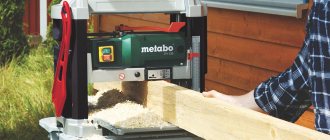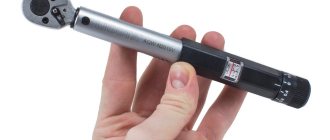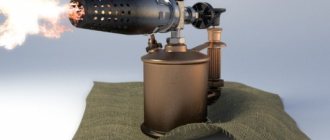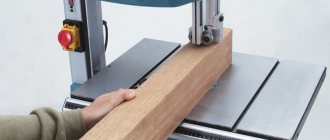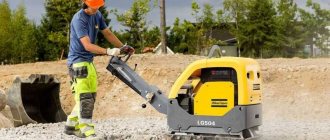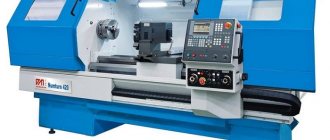The gas burner and electric hair dryer are rarely used in the household. This is explained by the complexity of their design and operating principle. The blowtorch is widely used in everyday life due to its fast heating and low price. When purchasing a device, you need to know its types and principles of use.
What is a blowtorch?
This device is a device that heats up as a result of the combustion of the original substance. In the evaporator it turns into a gas. The soldering lamp is refilled with gasoline, alcohol, kerosene or gas. The volume of the tank ranges from 0.1 to 2 l, the thermal power can be 0.5-3 kW. The heating device was invented by Karl Rickard Nuremberg in 1881 in Sweden and quickly became widespread.
Blowtorch device
The heating device consists of two main parts: a burner and a fuel tank. The first part of the blowtorch is attached to the top of the tank with the substance, which is covered with a lid with a seal. Such simple equipment ensures easy maintenance and operation of the device. How a blowtorch works can be judged by its standard composition:
- An ejector, which is a heating part and a continuation of the evaporator.
- Handle for convenient use and movement of the device.
- The fuel reservoir, which is the largest part of the device. The openings in the tank must be hermetically sealed.
- A pump with a valve system, which is designed to pump high pressure into the fuel tank.
- An evaporator that ensures the transition of fuel into a gaseous state.
- A needle valve that regulates the amount of fuel.
- Siphon tube for supplying fuel from the tank to the evaporator.
- Protective stand for blowtorch.
- A nozzle, which is located at the end of the tube and serves to direct the gas flow to the ejector through the evaporator.
Operating principle of a blowtorch
The effect of the heating device is the draft, which appears due to the design of the device. How a blowtorch works can be judged by its operating principle:
- The device begins to operate by manually starting the pump, which leads to the injection of excess pressure.
- It is directed into the blowtorch and causes the fuel to move towards the injector.
- The fuel passes through a tube, which is washed by the flame from the burner.
- The supplied fuel heats up and then evaporates.
see also
Comments 52
A blowtorch is an extremely necessary and quite simple thing; you just need to follow a small number of simple rules. Now large tablets with dry alcohol are sold; one is enough to light up a lamp after a long break and then work for a whole day (with breaks of up to 2 hours). This way the lamp does not smoke, and if you create minimal protection from the wind, the diffuser warms up much faster. I don’t remember the technology of their production very well, but I remember that about 30 years ago ALL blowtorches ran on gasoline, and occasionally there were those on sale that could run on a mixture of gasoline and kerosene (!) and very rarely the so-called. “omnivorous”, into which you could even pour diesel fuel. At one time, I also poured solarium sometimes out of desperation, but it was necessary to select the diameter of the nozzle (in my lamp it was screwed into a thread inside a U-shaped tube that approached the diffuser from above) and the pressure created inside the lamp (under some conditions it started to get terribly smoke). I mostly used my lamp in tandem with a Taganka for quickly heating large amounts of water, cooking bitumen for roofing and waterproofing work, and simply for cooking food when camping with a large group. I want to especially focus on the latter: - often on a hike or on vacation there is a friendly group of people of 5-10 people. and feeding them is not so easy at first glance. You can, of course, chop up a bowl of lettuce and feed sandwiches to everyone, but such food won’t last long, and it doesn’t even make for a full lunch. You can “stir up” an improvised stove-hearth on a fire using a tripod, but not all dishes can be hung on it; frying pans and thin-walled aluminum pots and kettles are also useless (they will become smoked on top, and everything will burn inside). Of course, if you go on a hike on your own and carry everything on yourself, then there are no pickles and you often have to get food for yourself in the forest. But if you travel by car, and especially with children, and especially in the cold season, then a full hot diet is a must! And here, as a camp kitchen, a powerful blowtorch, taganok and a universal cast-iron cauldron (with an aluminum lid, it is still lighter, and the role of the lid of the cauldron is not even secondary, but tertiary) 8-12 liters. Many people thought that the fig is so big and heavy (and a normal cast iron cauldron of 8-12 liters will weigh at least 10 kilos!), but the point is that the peculiarity of cooking in this category of cookware rarely allows you to use it comfortably , loading more than 60% -70% of the capacity. Today, such a cauldron can be heated only with the help of a good fire, a specialized gas burner from 4 kW, or using a blowtorch and a taganka. The thickness of the walls of a cast iron cauldron is at least 5 mm, and at the bottom it reaches 1 cm, so it makes no sense to even try to cook with it on the usual tourist tiles. Pilaf, fish soup, various porridges, shurpa, kharcho soup and many other dishes can always be prepared relatively simply and quite quickly, but nothing sticks to a normal cast-iron cauldron, it retains heat for quite a long time, and the blowtorch itself, taganok and cauldron are virtually eternal and trouble-free. One refill of a 2-liter lamp was enough for me to cook pilaf for 6-8 people (1.5-2 kg of lamb, pork or beef tenderloin, 1-1.5 kg of steamed rice (that’s what it’s called in store), rinse it thoroughly with several changes of water, pour in a small amount of boiling water for an hour and then start lighting the lamp and cooking the pilaf itself). The cooking process takes 1-1.5 hours, but you get a hearty lunch or dinner for the whole company.
What is a blowtorch used for?
The use of this device is limited by strict adherence to safety regulations, the operating temperature of the device and its thermal output. Why you need a blowtorch can be judged by the areas of application of the device in the household:
- heating of various parts and components;
- solder melting;
- welding of materials at low temperatures;
- carrying out disinfestation activities;
- tarring carcasses, burning bristles;
- heating frozen water pipes;
- lighting a fire, fireplace, coals;
- dismantling rusty connections of cast iron or steel pipes.
Types of blowtorches
The wide variety of heating devices is associated with a wide range of their applications. A mini blowtorch is used in jewelry making and repair. The devices have also found their use in large industries. In addition to size, there are different types of devices based on the type of fuel used:
- gasoline;
- kerosene;
- alcohol;
- gas.
Gasoline blowtorch
An apparatus operating on liquid fuel consists of a reservoir and a burner. In the fuel tank, gasoline is compressed to several atmospheres and partially mixed with air. For long-term operation of such models, it is important to know what gasoline to fill the blowtorch with. Poor quality fuel leads to frequent clogging of injectors. The characteristic features of a gasoline blowtorch are:
- large selection of models;
- different volumes of tanks;
- heavy weight of devices;
- regular cleaning of the device after use;
- easy operation;
- affordable price.
Kerosene blowtorch
The design of this type of heating devices is similar to gasoline devices. Their differences lie in the diameter of the nozzle through which the kerosene flows. Lamps using this type of fuel are used to heat large soldering irons or melt hard types of solder. In addition, they are equipped with a screw, which is needed when adjusting the flame. The duration of operation depends on what is poured into the blowtorch. Other features of kerosene models:
- high combustion temperature;
- heavy weight of the device;
- small selection of models;
- low cost;
- high fuel consumption.
Alcohol blowtorch
This type of instrument is rare nowadays. This is explained by the fact that an alcohol blowtorch has a small area of application. It is suitable for high-precision soldering when repairing jewelry, antennas and radio devices. The features of alcohol structures are:
- small area of application;
- complex operation and subsequent maintenance;
- high fuel consumption.
Gas blowtorch
This type of liquefied propane or butane is small in size. It is used as portable burners. Gas cylinders are sold separately. The connectors for connecting the device to the tanks are always unified, so there are no difficulties with what to refill the blowtorch with. The cylinders are easily connected to different models of burners. Features of gas appliances are:
- wide selection of devices;
- light weight;
- convenient use in small spaces;
- long service life.
If there are problems with the supply of fuel and air mass
In this case, prepare a straight-head screwdriver, pliers, a needle and thin wire.
A fuel supply problem is detected by the appearance of foam and its seepage through the base of the nozzle. Most likely the jet is clogged. Repair work involves the following sequence of manipulations:
- If there is a visible small gap, carefully insert the needle into the calibration recess and clean the fuel tube with it.
- If a positive result is not expected, the nozzle is removed.
- The wire is placed in the hole of the fuel pipe.
- Next, unscrew the valve.
- Pour gasoline into the channel. Perform the manipulation carefully and slowly.
- Assemble the structure into a single whole, put the jet in place.
- If flames appear from under the stem, extinguish the fire.
- Remove the valve handle and replace the worn stuffing box in the intake needle with a new one.
If the air pressure on the inner surface of the chamber in a blowtorch is broken, repairs are carried out based on the channels that function to supply an air stream. The technician should remove carbon deposits by filling the channels with trichlorethylene. Afterwards, to wash away the rust formed on the walls, rinse the channels with acid and dry by blowing with compressed air.
The work is carried out wearing special gloves. It is also better to protect your eyes with glasses.
You can watch video instructions on how to repair a blowtorch with your own hands: How to avoid regular repairs
In order to resort to repairing a blowtorch infrequently, you must follow the instructions for using the unit. We are used to turning on a blowtorch indoors. But then you should remember that the tool should be in working condition for no longer than 15-30 minutes. After use, the room is thoroughly ventilated.
You can extend the life of your equipment by applying the following rules:
- Before turning on the device, fill it with fuel. Refueling is carried out by filling the tank to ¾ of the total volume. Emptiness is necessary to create pressure.
- For pressure to be present, the pump also needs to make 10 gentle pumping motions.
- When pouring fuel into the burner tray, use an alcohol composition. Thanks to this technique, a minimal amount of soot is formed. Correct operation of the unit is possible if the fuel is ignited. There should be no drafts around.
- When fuel combustion is complete, open the needle valve. The fuel is now in a gaseous state. If drops are present, continue heating. If the burner does not heat up for a long time, place the lamp near a metal panel. Maintain a distance of 2-3 cm from the sheet to the nozzle.
- If the combustion goes out, clean the nozzle with a special needle.
- You can extinguish the torch of the instrument by screwing the valve and lowering the needle.
- Do not turn on a blowtorch near the burner. This provokes heating of the cylinder and fuel beyond 50 degrees.
- The fuel that is poured into the equipment must meet the specifications established by the blowtorch manufacturer.
Despite the fact that the design of the blowtorch is simple, it also has problems that interfere with normal operation. And if there are some malfunctions, it is prohibited to use a blowtorch. But in most cases, repairs are easy to do yourself, which will eliminate downtime and make the tool safe to use.
How to choose a blowtorch?
A large selection of heating devices makes it difficult to purchase them. The following criteria may influence the choice of a blowtorch:
- Apparatus design
. Mostly on the market there are models with a solid body. However, some devices are equipped with a special hose up to 1.5 m long. This design is convenient for working while suspended. - Igniting the flame
. Options for blowtorches with liquid fuel take much longer to prepare for use, so if frequent use is necessary, it will be more convenient to opt for a gas device with piezo ignition. - Fuel
. A gasoline blowtorch is refueled at a gas station and produces a high-temperature flame. Gas models will be more expensive to provide with fuel, and sometimes fuel must be purchased in cylinders. - Volume of the tank
. To operate gasoline blowtorches for an hour, you must choose a model with a tank capacity of one liter or more. - Maintenance and operation
. This is an important indicator, because during use it will be necessary to clean the nozzle and flush the fuel tank from sediment. In this regard, blowtorches with a completely disassembled design are more convenient. Any type of product is designed to operate for 5 years.
Blowtorch rating
A wide range of heating devices makes it possible to choose models that meet all the necessary requirements of the future owner. Among the best blowtorches are:
- SIBRTECH 91442
. This is a reliable and high-quality device at a low price. The lamp is used on gasoline of various brands, except leaded. The tank capacity is about 1.5 liters, but you don’t need to fill it completely. The device consumes fuel economically, so one refill is enough for an hour of use. The model's steel handle has a comfortable design. Among the advantages, users note the ease of adjusting the fuel supply, but the disadvantages include frequent clogging of the nozzle. It has to be cleaned after each use.
- BARS 91452
. This model of blowtorch heats up quickly and has a stable flame, so you can work with it in windy weather. A significant drawback of the device is the clogging of the nozzle, but its structural arrangement helps to quickly clean it. The thick metal case is designed for long service life. The device is intended for repair work, soldering and heat treatment of various parts.
- DREMEL VERSAFLAME 2200-4
. Experts consider this model to be the best among gas blowtorches. Interesting appearance and wide range of applications make the device popular. This small blowtorch has a small reservoir that lasts for 75 minutes of intensive use. The kit includes several types of attachments designed for soldering and torch extension. The only drawback is the high price of the device.
Safety precautions [ edit | edit code ]
In addition to the obvious fire hazard, a blowtorch is a potentially explosive device, since the tank contains a mixture of fuel vapor and air under high pressure, and the tank heats up during operation. Therefore, when using a blowtorch, strict adherence to safety rules is required, namely:
- do not allow the tank to heat up to a temperature above 50 °C;
- do not open the tank lid and do not refill while the lamp is running or has not yet cooled down;
- do not create excess pressure in the lamp, do not use gasoline in a lamp intended for the use of kerosene;
- monitor the tightness of the pump valves and connections;
- During transportation and storage, make sure that there is no excess pressure and no fuel residues in the tank.
The most common cause of a blowtorch explosion is the opening of the hot torch reservoir lid. In this case, gasoline vapors come into contact with a burner heated to 500-600 °C and ignite, causing an explosion of the steam-air mixture in and around the tank. You also need to take into account that the old lamps used kerosene; when filling with gasoline and subsequent use, the tank burst under pressure. Burns in this case are almost inevitable, since they usually occur when trying to “pump up”
It is necessary to understand that when igniting a gasoline lamp, the evaporator is filled with gasoline, and if at this stage the fuel supply valve is closed, then the gasoline remaining in the evaporator will continue to leave the evaporator through the nozzle in the form of a liquid, or in the case of greater heating, in the form of a gas-liquid or gas jet .
In addition, when working indoors, it is necessary to have sufficient ventilation to remove strong-smelling, toxic and carcinogenic combustion products.
A blowtorch, in most cases, can be replaced with a safer gas burner (the gas in the cylinder does not mix with air).
If there is a source of electrical energy of sufficient power at the work site, the blowtorch can be replaced with a technical hair dryer, which does not use flammable materials and is safer.
The design of a gasoline blowtorch and its instructions must be studied very carefully, since this type of device is a fire hazard. Often during repairs or installation of any structure it is necessary to heat the surfaces for better assembly.
Blowtorch device.
The use of various portable gas burners or electric hair dryers is not widely used in the household. These industrial devices are difficult to use, so a blowtorch is used to quickly heat them up. But numerous questions about operation often come to specialists. This is due, first of all, to the fact that people are a little lazy to read the instructions to the end. The descriptions and instructions are quite boring and complicated. Therefore, it is necessary to describe the operation of the lamp in a simpler way.
Read about sawmills at home here.
How to use a blowtorch?
The devices are a fire hazard, so strict precautions must be taken. You can understand how to set up a blowtorch by following the algorithm of actions:
- Fill the tank with fuel no more than 3/4 of the tank volume.
- Obtain pressure after 6–10 smooth manual pressures.
- Pour fuel into the bath: gasoline or ethyl alcohol, which does not leave soot when burned.
- Light the fuel to initially preheat the evaporator.
- Open the shut-off needle after combustion and adjust the flame size.
- Stop the blowtorch by extinguishing it. To do this you need to close the needle.
- Cool the device, then open the reservoir to release the pressure.
A little about making leather cuffs for Primus stoves
Posted by Manuel · 04/10/2016 08:32
4,634 views
Often in old Primus stoves, due to their venerable age, the leather pump cuff is one of the parts susceptible to destruction.
A few words about how to make a new knee cuff. Dimensions are given for the Tula Primus pump with an internal sleeve diameter of 18 mm.
1. Cut out a circle the size of a two-ruble coin from leatherette, or preferably from genuine leather 2 mm thick. The PVC coating must be removed with sandpaper.
2. Use a punch to punch a hole with a diameter of 5 mm in the center.
3. We clamp the resulting “washer” on the M5 pin, with the “shaggy” side inside the molded cuff. It is better to take an M5 washer with a “shaggy” side with a diameter of 9.10 mm.
4. Dip the pin together with the workpiece into melted paraffin and leave it there for 15-20 seconds for impregnation. You should not wait longer than this time, because the leatherette blank becomes rigid and inconvenient for further molding.
5. First molding on a die with an internal diameter of 20 mm.
6. Second molding on a die from a tube with an internal diameter of 17.5 mm. It is necessary to keep the workpiece in the tube until it cools completely. If there is no tube, you can use the pump sleeve as a mandrel, after removing the burrs.
7. Holding the workpiece by the pin, use a sharp knife to trim the uneven edges along the cut of the tube.
9. Using a punch with a diameter of 8.9 mm, punch a hole in the workpiece.
10. That's it! The cuff is ready!
The pump is assembled in the following order:
1. The handle is screwed onto the rod and the pump cover is put on.
2. At the place where the transition from a diameter of 6 mm to a diameter of 5 mm begins, a little cotton soaked in oil is wound. thread This is necessary to prevent air leakage.
3. The pump washer is put on; the side facing the cuff should have a smooth, burr-free surface. This is also necessary to prevent air leakage.
4. Next, a piece of brass tube is put on.
5. A cuff is placed on the brass tube. The cuff should sit loosely on the brass tube, the gap is 0.3. 0.5 mm. This is necessary for active filling of the sleeve with air during the reverse stroke of the rod.
6. An M5 nut with “flat spots” is screwed onto the thread of the rod.
7. The nut with “balts” is locked with a regular nut.
8. The cuff and rod are lubricated with semi-liquid oil. I used a compressor.
9. The assembled structure is inserted into a lightly lubricated sleeve. A test pumping is carried out.
What is the frequency of checking blowtorches?
A heating device is a source of increased danger that requires compliance with certain rules during use:
- Do not use low octane gasoline.
- Stop working with the device if there is a leak, the fuel tank is overheated or in an unventilated area.
- Do not refuel the device during its operation or immediately after use.
In addition, the frequency of checking the parameters of blowtorches is important:
- To ensure the integrity of the liquid fuel supply systems, the unit must be inspected at least once a year.
- To check the tightness and tightness of the connection, inspect the device monthly.
- To ensure a stable flame of the torch, the body of the heating structure is tested after each use.
How to clean a blowtorch?
The burner of the heating device requires regular maintenance. Otherwise, working with a blowtorch will be difficult. The accumulation of dirt occurs due to the use of low-quality fuel. Impurities begin to accumulate, combining with combustion products. You can clean a blowtorch in different ways:
- The device comes with a special needle for processing the hole. If there is none, then the jet can be cleaned with thin wire.
- If there is a need to wash the soldering device, treat it with a special aerosol solution or gasoline. Some craftsmen clean the device with a cloth moistened with white spirit. It is important to saturate the rags completely so that the product can cope with all contaminants.




